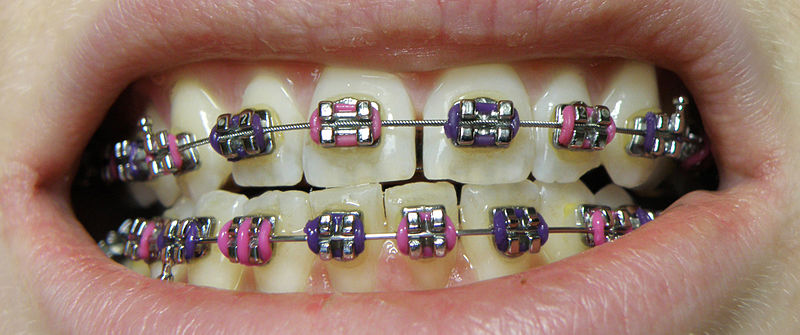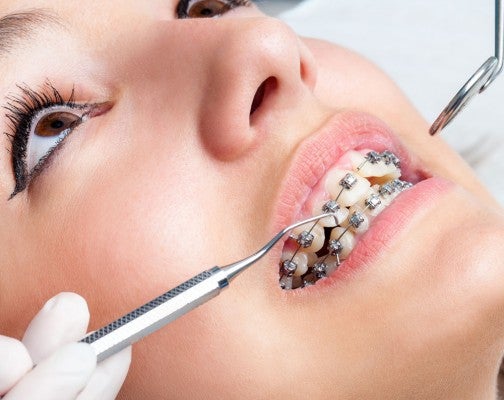Comprehensive Guide to Orthodontics Treatments for Remedying Oral Misalignments
Recognizing the ins and outs of each procedure, including their systems, advantages, and potential downsides, is vital in making informed choices concerning one's orthodontic treatment. As we browse through the thorough overview to orthodontic procedures for fixing oral misalignments, the elaborate information of each method will unfold, shedding light on the course towards a harmonious and functional oral positioning.
Orthodontic Procedures Review

Along with clear aligners and typical braces, orthodontists might likewise suggest other interventions like headwear, palatal expanders, or retainers to attend to particular positioning issues (orthodontist). These procedures are customized to each client's special demands and might involve a mix of therapies to attain the wanted outcomes. Regular changes and surveillance are important parts of orthodontic treatment to guarantee progress is on track and to make any required modifications along the road. By going through orthodontic treatments, patients can not just accomplish a straighter grin however also improve their overall oral wellness and function.
Typical Dental Braces: Exactly How They Work
When considering orthodontic treatments for dental imbalances, traditional dental braces stand out as a tried and true approach for dealing with teeth positioning. Standard braces are composed of brackets, wires, and bands that function together to use continuous pressure on the teeth, progressively relocating them into the desired alignment.
One trick facet of how typical dental braces work is the process of bone improvement. As pressure is used to the teeth via the dental braces, the bone bordering the teeth is reshaped to support the brand-new tooth placements. This improvement is crucial for the lasting stability of the fixed positioning. Individuals will need regular changes at the orthodontist's workplace to ensure the braces remain to apply the appropriate pressure for effective teeth activity.
Unnoticeable Aligners: Benefits And Drawbacks
Invisible aligners supply a very discreet and hassle-free alternative to traditional dental braces for remedying dental imbalances. These clear, custom-made trays are basically undetectable when used, making them an enticing option for individuals looking for a much more visually pleasing orthodontic treatment. One of the main benefits of undetectable aligners is their removability, permitting simpler maintenance of dental hygiene contrasted to typical braces. People can eliminate the aligners before eating or site here cleaning their teeth, lowering the threat of food getting stuck in the device and simplifying the cleansing procedure.

Surgical Orthodontic Options
Surgical treatments in orthodontics existing practical alternatives for attending to complicated oral imbalances that why not try these out may not be successfully solved with conventional orthodontic treatments. While traditional dental braces and unseen aligners can deal with several orthodontic problems, particular cases need medical intervention to accomplish optimum results. Surgical orthodontic choices are normally recommended for severe malocclusions, considerable jaw inconsistencies, and situations where the underlying bone framework needs modification to achieve proper positioning.
One typical medical orthodontic procedure is orthognathic surgical treatment, which includes repositioning the jaws to remedy useful problems such as difficulty talking or eating. This surgery is frequently performed in collaboration with an orthodontist that assists line up the teeth prior to and after the treatment. Surgical orthodontics might likewise entail treatments to subject impacted teeth, eliminate excess periodontal tissue, or reshape the jawbone to create a more unified facial account.
Before taking into consideration surgical orthodontic options, people undertake an extensive examination to establish the necessity site and prospective advantages of such treatments. cumming braces. While surgery might appear overwhelming, it can considerably enhance both the feature and looks of the smile in instances where traditional orthodontic treatments drop short
Retainers and Post-Treatment Care

Post-treatment care includes following the orthodontist's directions faithfully. This might consist of proper oral health practices, going to follow-up consultations, and using the retainers as prescribed. Failure to follow post-treatment treatment instructions can lead to regression, where the teeth gradually relocate back in the direction of their original positions. Regular retainer wear, excellent dental hygiene, and regular dental examinations are necessary for preserving the outcomes achieved through orthodontic surgery and making certain the long-lasting stability of the remedied oral alignment.
Verdict
In conclusion, orthodontic procedures use different alternatives for fixing oral misalignments. Standard braces utilize steel brackets and cables to change teeth into appropriate placement. Unnoticeable aligners supply an even more discreet option however may not be suitable for all instances. Surgical orthodontic alternatives are available for much more serious misalignments. Retainers are generally used post-treatment to maintain the brand-new alignment. Generally, orthodontic procedures can effectively improve oral health and visual look.
As we browse with the thorough guide to orthodontic treatments for remedying dental imbalances, the elaborate information of each technique will certainly unravel, losing light on the course towards a functional and harmonious oral alignment. - orthodontist
One of the most typical orthodontic treatments is the usage of braces, which consist of metal braces and cords that apply gentle stress to gradually shift teeth right into the preferred placement.When thinking about orthodontic treatments for oral imbalances, typical dental braces stand out as a tried and true technique for dealing with teeth placing. In addition, invisible aligners might not be suitable for intricate orthodontic concerns that require even more significant teeth motion, as they are typically advised for moderate to modest cases. Retainers are customized orthodontic devices created to hold teeth in their fixed positions after the conclusion of orthodontic treatment.
Comments on “Choosing the very best Cumming Orthodontics for Effective Braces and Aligners Solutions”